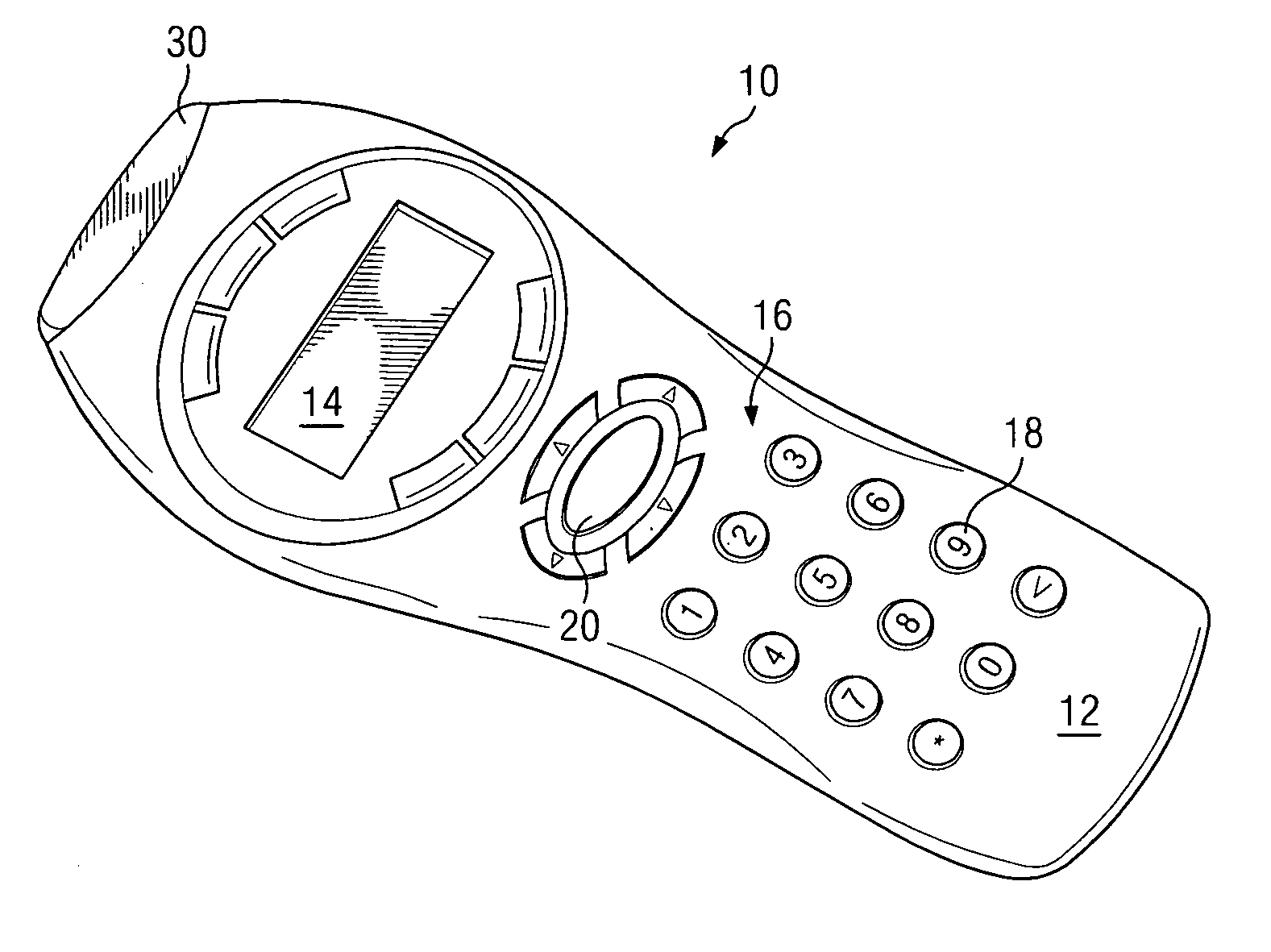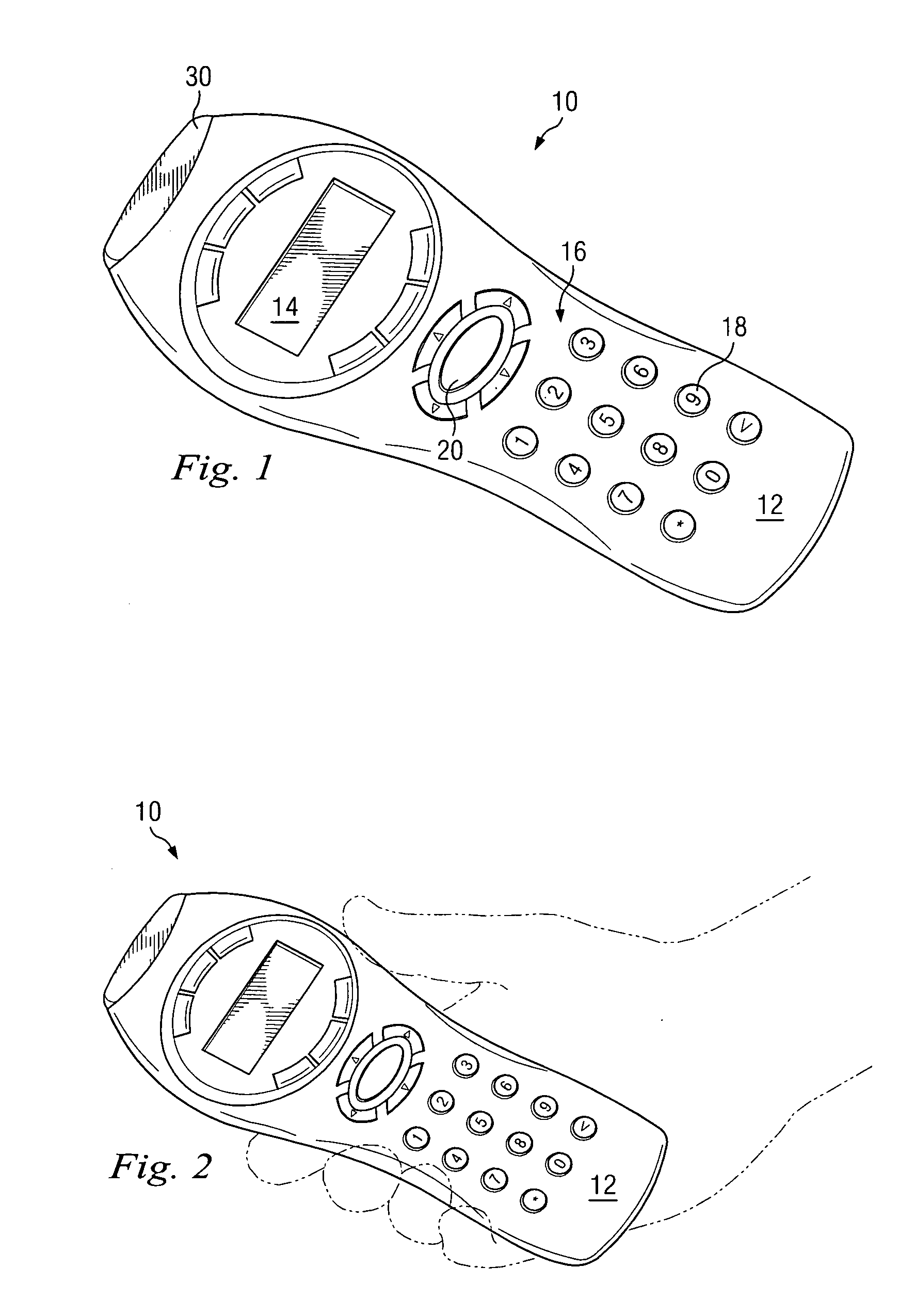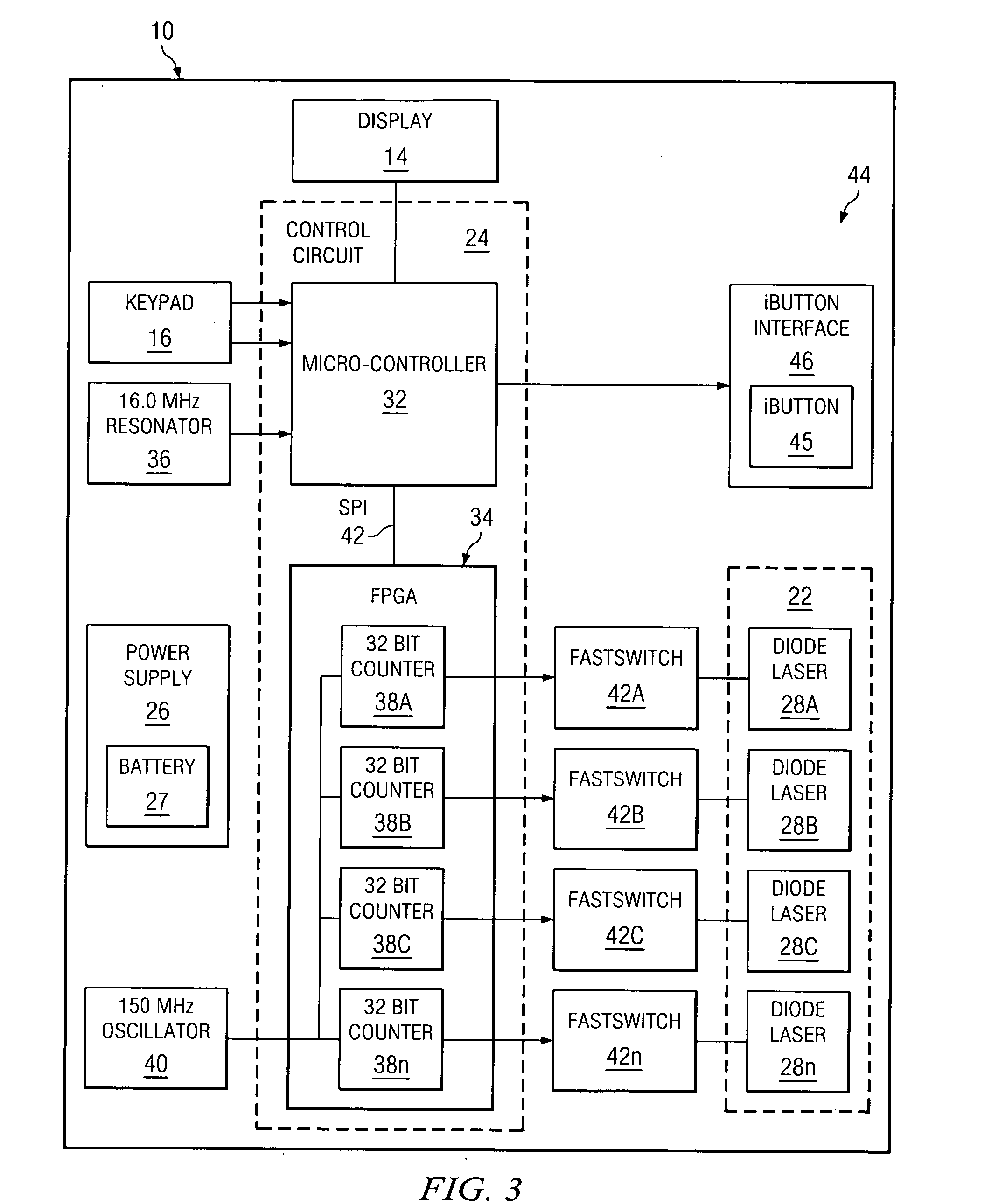Hand held pulse laser for therapeutic use
a pulse laser and hand-held technology, applied in the field of pulse lasers for therapeutic use, can solve the problems of affecting the output of laser diodes, if not carefully controlled, and the monochromatic light produced by leds is diffuse, and achieves the effect of high control
- Summary
- Abstract
- Description
- Claims
- Application Information
AI Technical Summary
Benefits of technology
Problems solved by technology
Method used
Image
Examples
Embodiment Construction
[0028] The pulse laser for therapeutic use, referred to herein as “pulse laser”10 includes various components contained within or on a housing 12. As shown in FIG. 1 and FIG. 2, the housing 12 is sized to be comfortably held in the hand of an operator. A display panel 14 is associated with the exterior of the housing 12. The display 14 can be used to display the operational status of the pulse laser 10 and can, in conjunction with an input keypad 16, be used to control the operation of the pulse laser 10.
[0029] Individual keys or buttons of the input keypad 16 can be associated with specific operation and control tasks. Representative examples of individual buttons used to control the operation of the pulse laser 10 include an on / off switch; a timer switch, useful for setting the duration of a pulse lasing treatment; and a light switch, used to backlight the display 14 for ease of visibility.
[0030] In addition, certain other input buttons of the input keypad 16 are preferably not ...
PUM
 Login to View More
Login to View More Abstract
Description
Claims
Application Information
 Login to View More
Login to View More - R&D
- Intellectual Property
- Life Sciences
- Materials
- Tech Scout
- Unparalleled Data Quality
- Higher Quality Content
- 60% Fewer Hallucinations
Browse by: Latest US Patents, China's latest patents, Technical Efficacy Thesaurus, Application Domain, Technology Topic, Popular Technical Reports.
© 2025 PatSnap. All rights reserved.Legal|Privacy policy|Modern Slavery Act Transparency Statement|Sitemap|About US| Contact US: help@patsnap.com



